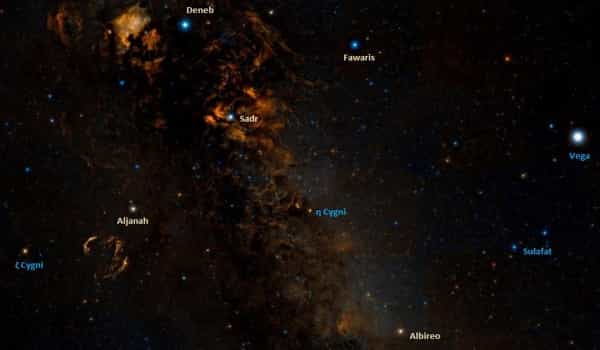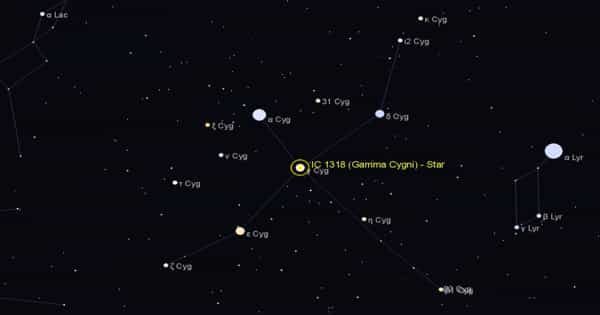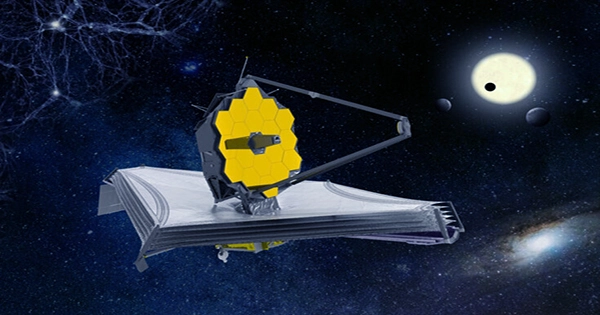Gamma Cygni, also known as Sadr, is a white supergiant star in the constellation Cygnus. It is a star in the northern constellation of Cygnus, forming the intersection of the Northern Cross asterism of five stars. It is more than a hundred times the size of the Sun. It is approximately 1,800 light-years (560 parsecs) from the Sun, according to parallax measurements obtained during the Hipparcos mission.
The Sadr Region (also known as the Gamma Cygni Nebula) is the diffuse emission nebula that surrounds Sadr (Cygnus) at the center of the cross. The Gamma Cygni Nebula is classified as an emission nebula because it is ionized by nearby star radiation and emits visible light as a result. The Sadr Region is one of the surrounding nebulous regions, along with the Butterfly and Crescent Nebulae. The visible portion of the H II region spans an area of more than 100 light-years. An O9-class star illuminates the nebula, but it is obscured visually by interstellar material. In addition to the emission diffuse nebulae, it contains many dark nebulae.

Formation
Gamma Cygni itself has a magnitude of about 2.2. The nebulous regions surrounding the region are also quite bright. Around 12 million years ago, it formed from an interstellar medium of gas and dust. Gravity drew the swirling gas and dust together until it reached the critical temperature, resulting in the birth of Sadr, the second-brightest star in Cygnus.
Sadr is a young star, and the interstellar medium from which it formed was likely rich in elements such as hydrogen, explaining its short lifespan, as Sadr will eventually go supernova.
Location
Gamma Cygni is a star in the constellation Cygnus, the celestial swan. It denotes the swan’s chest. Sadr is the second-most-luminous star in this constellation. Cygnus is one of the largest northern constellations in the night sky, occupying an area of 804 square degrees. This constellation is famous for its asterism, the Northern Cross, as well as the bright stars Deneb – the 19th brightest star in the night sky – and Albireo, a famous contrasting double. The Northern Cross asterism is located within the Summer Triangle asterism, which is formed by the bright stars Deneb, Vega, and Altair.
Properties
Gamma Cygni, with an apparent visual magnitude of 2.23, is one of the brighter stars visible in the night sky. This star’s stellar classification is F8 Lab, indicating that it has progressed to the supergiant stage of its stellar evolution. Since 1943, the spectrum of this star has served as one of the stable anchor points for classifying other stars.
This star is massive in comparison to the Sun, with a mass 12 times that of the Sun and a radius roughly 150 times that of the Sun. At an effective temperature of 6,100 K in its outer envelope, it emits more than 33,000 times the energy of the Sun. This temperature is responsible for the star’s characteristic yellow-white hue. Massive stars like this burn through their nuclear fuel much faster than the Sun, so the estimated age of this star is only about 12 million years.
















